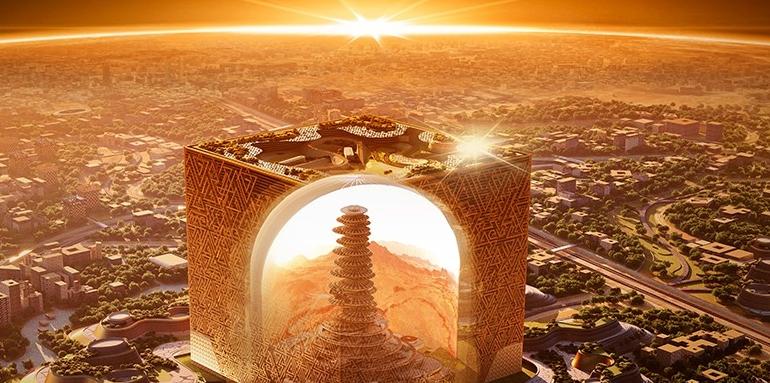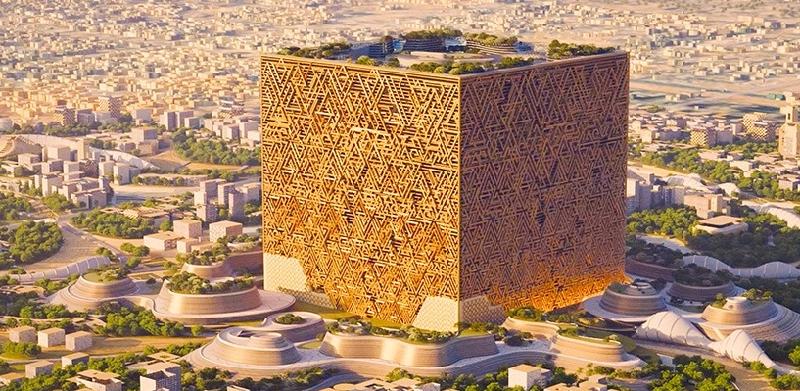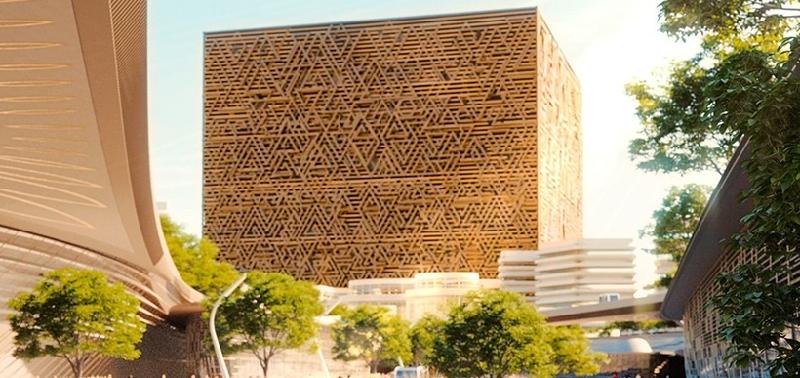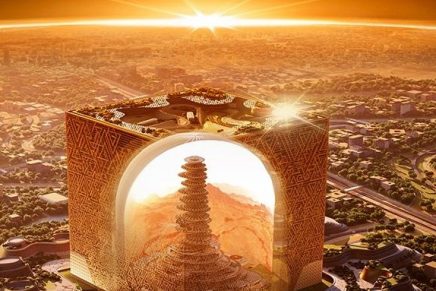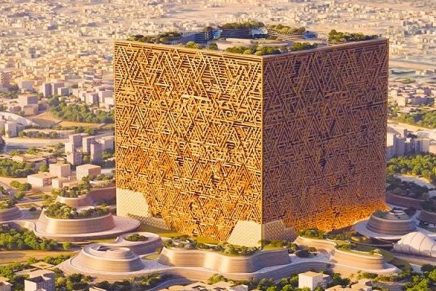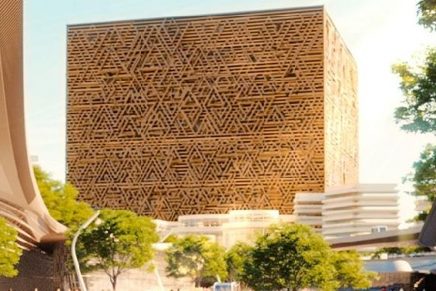The world’s soon-to-be largest building has officially broken ground.
Beyond Height: The Mukaab’s Groundbreaking Vision for Modern Cities.
The landscape of northwest Riyadh is set to change forever with the ground-breaking of the Mukaab skyscraper, soon to be the world’s largest building by sheer volume. Rising to 1,312 feet, this cubic marvel isn’t chasing the title of “world’s tallest.” Instead, the Mukaab aims to captivate on a massive scale, housing an entire community within its staggering dimensions and redefining what a city centerpiece can be.
The Mukaab, translating to “cube” in Arabic, is an architectural ode to Najdi design, featuring intricate, interlocking triangles on its robust, blocky silhouette. Its distinctively modern yet culturally rooted design is just the start. Step inside, and you’ll find a spacious atrium with a spiraling central tower that reaches skyward, creating an airy core to house more than one million square feet of office space and over two million square feet of retail.
With a staggering plan for 100,000 private residences, as well as a theater, a university, and a museum, the Mukaab’s versatility will be a showpiece for New Murabba’s 19-square-kilometer development and a new downtown for Riyadh. The scale is ambitious, but it’s also part of Saudi Arabia’s Vision 2030—a bold initiative to diversify the country’s economy and cultural landscape beyond its oil-rich origins.
Ambitions Beyond Height: Mukaab by the Numbers
The Mukaab will dethrone Washington’s Boeing Everett Factory, currently the world’s largest by volume, boasting 472 million cubic feet. That title has stood since 1967, but with the completion of this 400-meter cube, Boeing will pass the torch. This shift underscores the global trend of city-centered, mixed-use “mega buildings” that emphasize volume, versatility, and community over height alone.
A Bold New Blueprint for Urban Living?
Some might wonder: does Riyadh’s future truly need a building of this size? Critics argue that Mukaab’s grand vision risks overshadowing the practical needs of the city, as mega-projects can sometimes prioritize symbolism over functionality. Yet, if successful, Mukaab’s groundbreaking design could serve as an example for future urban spaces that promote a “city within a city” model—a move that might reshape not only Riyadh but set a new standard globally.
By 2030, the Mukaab will stand as a testament to the changing face of Saudi Arabia and the expanding role of mega-structures in shaping city identities. Whether it fulfills its promise as an icon of Riyadh or challenges our very notion of urban space, one thing is certain: the Mukaab will make waves across the world of architecture and beyond.

